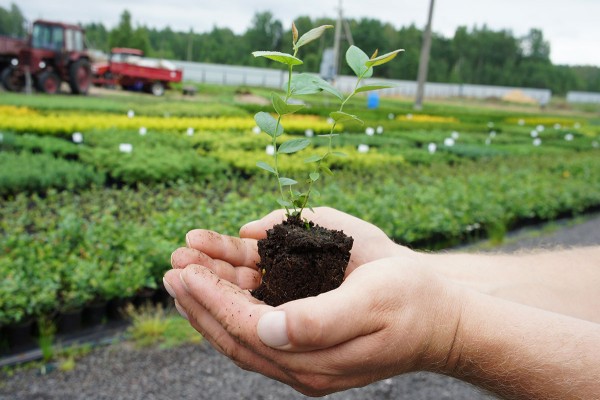Reproduction of blueberries is a wonderful way to supplement the collection of berry crops in the garden or rejuvenate an obsolete plant. Wherein it is important not only to increase the number of bushes, but also to maximize the preservation of genetic traits. This is possible only with vegetative reproduction, which must be carried out correctly and in a timely manner.
Table of contents
Garden Blueberry Breeding Methods and Timing
Breeding methods for blueberries are divided into two main groups.This is genital, which is carried out by seeds and vegetative - by parts of the plant. Seed reproduction at home - painstaking work, which includes the rejection of unsuitable and the selection of promising seedlings. This may take several years. Therefore, this method is practiced only for the purposes of selection for the breeding of new varieties.
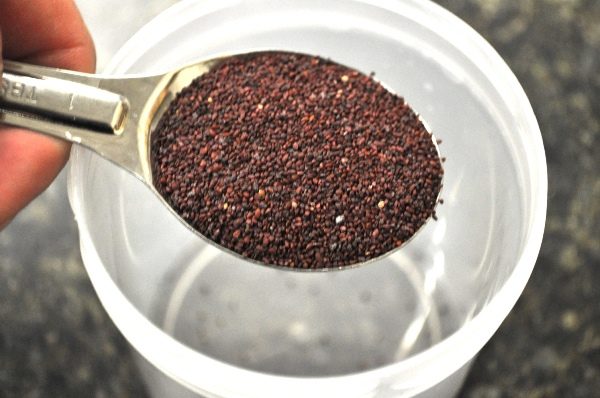
Vegetative (asexual) breeding methods allow you to save varietal characteristics of blueberries. Each option has its advantages and disadvantages, so gardeners choose the most suitable method for an individual case.
Reproduction of garden blueberry cuttings occurs due to the regeneration process, during which new adventitious roots are formed from the tissues of the stem. Shoots grow from existing buds.
When choosing a green grafting method, pay attention to the age of the blueberry shoots. As lignification escapes, metabolic processes decrease, water content and water-holding capacity of tissues are important conditions for the formation of new roots. Thus, planting material from green shoots develops faster, gives a greater percentage of plant survival after rooting.
Planting material from certain parts of blueberries have different degrees of rooting. The most high root-forming ability are different cuttings from coppice shoots. The roots of shoots shoots are formed from adventitious buds, which are characterized by increased metabolism, which accelerates the formation of new cells. This increases the formation of roots by 3-4 times than the cuttings taken from the fruiting area. Planting material harvested in late June, early July.
Blueberries can be propagated and lignified cuttings. Planting material under optimal conditions can be stored for a certain amount of time. Therefore, lignified cuttings are often harvested for transportation over long distances or for planting for the next season.
There is no specific time guaranteeing the best results for cutting. The opinions of many agronomists on this subject are divided. The main condition for the preparation of high-quality planting material is a healthy shoot and dormant buds. In regions with severe winters, cutting of cuttings is recommended at the beginning of winter,and for the rest of the regions it is permissible from December to the first decade of March.
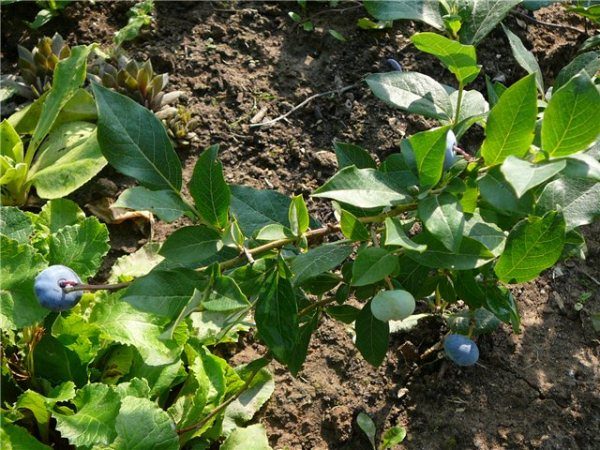
Blueberry seedlings can be obtained using layering. The essence of this method is the rooting of the stem, not separating from the mother plant. This is one of the natural ways of plant reproduction, the technology of which is available to any gardener. The disadvantage of this type of breeding is the duration of the process. Rooting slips can last 2-3 years. The ideal time for this method - the period of growth of blueberries, so it is carried out from mid-April to September.
Reproduction by cutting
Methods of harvesting, rooting green and lignified cuttings have differences and similarities. Regardless of the planting material, the grower must carry out the procedure with minimal disruption of the biological characteristics of the plant.
Procurement of green cuttings
With this method of reproduction, the correspondence to the optimal terms is of particular importance. This is the period from June 20 by July 10.
Cuttings, from insufficiently matured shoots, often suffer from drying out, are affected by diseases and fungal spores. The leaves of these cuttings are underdeveloped, and can not supply the stem with nutrients in sufficient quantities. With a later harvesting of cuttings, nutrients enter the growth points, which leads to their loss, affecting the formation of roots.
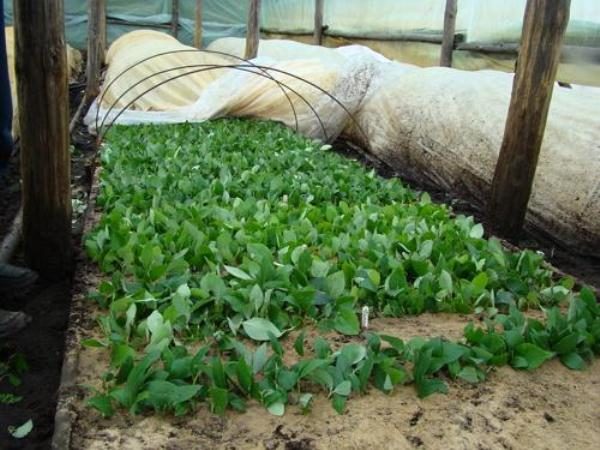
The shoots, ready for grafting, have springy, non-fragile stems and dark green leaf color. For cutting cuttings choose strong shoots of the first and highest orders of branching height 6-12 cm. They are broken off by hand with a piece of wood and bark of last year's growth (heel).
Preparation of cuttings:
- treatment of the lower part of the cutting (removal of exfoliated bark);
- removal of 2-3 lower leaves (1/3 length);
- pruning the remaining leaves by 1/3;
- Growth treatment with growth stimulants
The cuttings are planted on the prepared ridge in greenhouse conditions.
Preparation of woody cuttings
For the preparation of cuttings choose last-year-old shoots fully matured and intact by frost Formations or replacements with a diameter of 0.5-1.2 cm. Cuttings of larger diameter do not root well, and smaller ones are given by weak plants. Shoots with a large number of flower buds are not suitable for reproduction, their removal also does not give positive results.
Branches cut in winter are stored in boxes filled with peat or sawdust and holes for aeration. The boxes are placed in a dark, well-ventilated room at air temperature. 0 ° С- + 5 ° С. In late March or April, cuttings are cut. The best root-forming ability is distinguished by the lower parts of the branches.
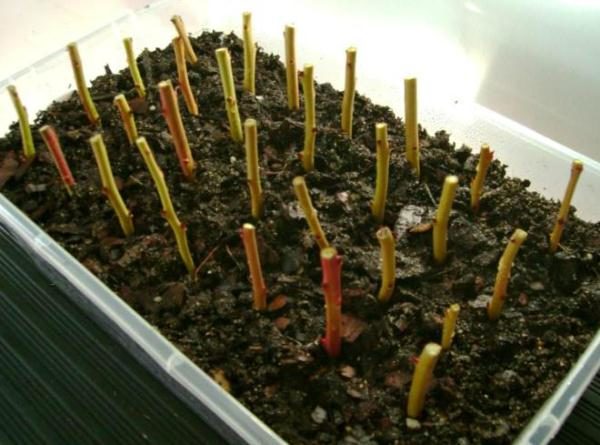
Cutting cuttings do sharp shears, avoiding forcing and damage to the bark.
Stages of cutting:
- cutting length 10-12 cm;
- make the lower cut under the kidney with a slight bias;
- upper cut 0.5 cm – 1 cm above the kidney;
- the stalk is treated with growth promoters.
Rooting cutting, planting and care
Green and lignified cuttings of blueberry root in the ridges or boxes, creating greenhouse conditions for them. Rooting can be of any convenient size, but with a height of at least 15-20 cm. The ridge is placed on a layer of drained soil, expanded clay or coarse sand. As a room, you can choose a greenhouse or equip removable frames with glass (polyethylene) over the ridge.
The most optimal substrate for the development of cuttings is a mixture of peat with river sand (1: 1). One day before planting the cuttings, the substrate is sieved and shed with warm water. The prepared ridge is covered with plastic wrap for complete impregnation of peat with water.
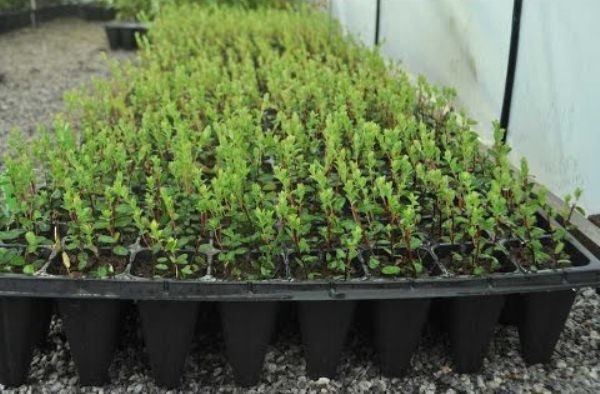
Lignified cuttings planted according to the scheme 5x3, and green according to the scheme 5x5leaving on the surface of the substrate 1-2 buds. The whole rooting period maintains the temperature + 20 ° С- + 25 ° С and light moisture substrate.
The roots of the cuttings begin to form after 4 weeks. During this period, the plants begin to gradually accustom themselves to drier air, periodically removing the film and glass. 2-3 months after planting, glass or film covers are completely removed and fed with ammonium sulphate (10 g / m2).
Young plants are left to overwinter at the place of rooting.To do this, they mulch 5 cm with a layer of peat, sawdust or fallen leaves. In the spring after warming up the soil they are transplanted to a permanent place.
Reproduction by layering
Also, as mentioned above, blueberries can multiply by layering. This method is used for the reproduction of young bushes, which have few shoots for grafting or for poorly rooted varieties when grafting.
Prior to this, the stem near the uterine plant is loosened. Pick up strong and healthy shoots. Opposite the selected branches from the base of the bush form a furrow depth 6-8 cm and a length equal to the length of the shoots. Watered with water.
Annual growths of branches shortened by 1/5 and placed in the furrow. Each segment of the branch with two developed buds is fixed to the soil with the help of wire hooks. Furrow sprinkled with sawdust.
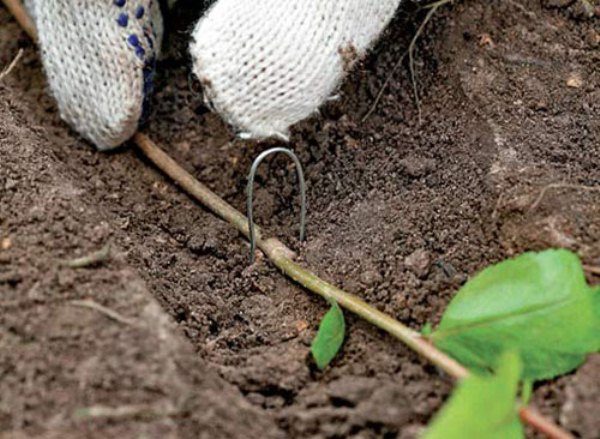
After reaching the vertical height of the shoots 8-10 cm they need to roll up to half the height. To do this, use a mixture of peat and sawdust (1: 1). This procedure is repeated 2-3 times as the shoots grow. Throughout the summer, the soil is kept wet and loose. The shoots grown in the current year in 2-3 years form a full-fledged root system, after which they are transplanted to a permanent place.
Blueberries are a relatively new crop in Russian gardening, whose agricultural technology is not fully mastered by gardeners. The secrets of successful cultivation are based on the correct selection of varieties that are highly adaptable to the harsh conditions for this culture.. By planting varieties that are suitable for the region, you can maintain home-grown blueberry plantations for many years by propagating them in vegetative ways.
